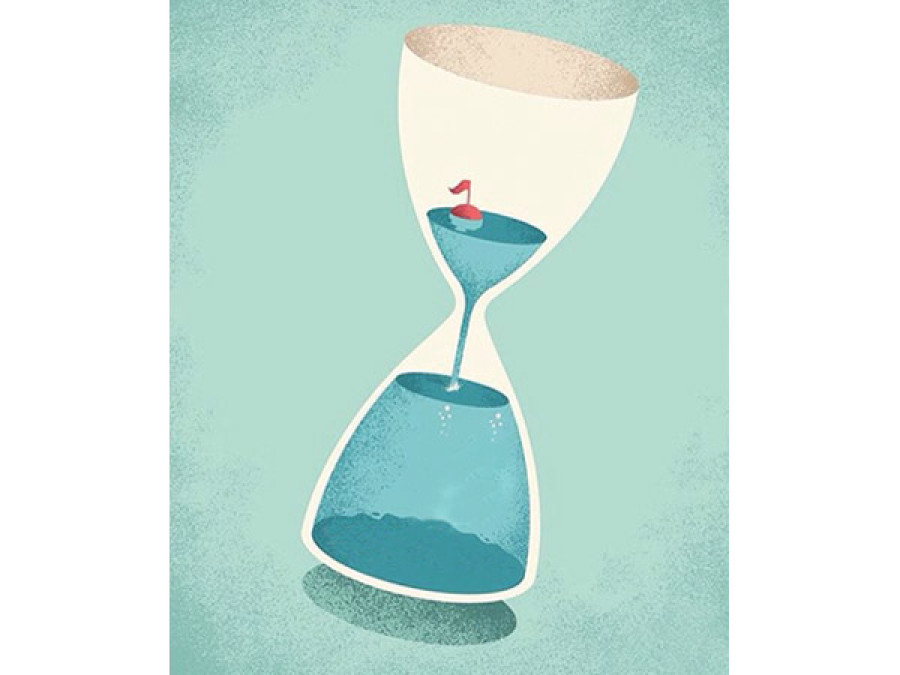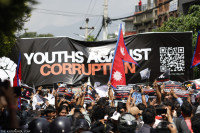Opinion
No power to the people
Many experts believe that the prolonged load-shedding in Nepal is a planned event
Pramod Raj Pokharel
There does not seem to be a way out for Nepal’s long-standing electricity crisis. Load-shedding lasting 18 hours per day during the dry season is evidence of that. Lack of a mature local energy market and the inability to create an integrated Nepal power system have not let new power producers enter the energy market freely and convincingly. In the past, a few electricity related business models had been tried out, but they were unsuccessful. The existing energy market players have kept the energy market nicely folded so that new interventions hardly have a chance.
Many experts believe that the prolonged power cuts in Nepal are a planned event. When the Butwal-Gorakhpur cross-border transmission link did not materialise, the spill energy problem of the 144 MW Kali Gandaki-A project gave a nice lesson to the players of Nepal’s hydropower sector. Many believe that the country’s present electricity hunger is the only back-up plan ensuring the return on investment for the Upper Tamakoshi project (against its huge upfront cost) in case the Dhalkebar-Muzaffarpur cross-border transmission line is disrupted. Under such a controlled energy market, one cannot possibly manage the present energy crisis in a short span of time.
However, both the pros and cons of a sector sometimes are useful resources for shrewd management. When households were forced to shift from liquefied petroleum gas (LPG) to electricity to keep their kitchen fires burning during the recent Indian blockade, neighbourhood transformers started exploding across the city. The Nepal Electricity Authority (NEA) realised that its low quality distribution infrastructure was good enough only for the lighting loads and not suitable for heavier loads like those coming from kitchen needs. The NEA’s system loss figure has not been revealed, but experts predict it is well above 50 percent.
Existing problems
The hydropower development model that has been adopted in Nepal is inefficient in terms of both cost and the water-energy conversion rate. The average water-energy conversion rate is about 0.18 kWh per 1,000 litres of water. Almost all the hydropower projects implemented in Nepal so far are underutilised. The total installed capacity is more than 768 MW. The amount of power generated varies widely and drops sharply to 300 MW during the dry season. When the raw material is free, everybody wants to make as much money as possible and nobody cares about generation reliability. The presence of many low-head run-of-the-river hydropower projects with a very low annual kWh per MW generation factor is the reason for that.
Under these circumstances, why not focus on the side which is creating the problem? The problem of run-of-the-river hydropower projects is the unavailability of water in the dry season. Once that is made available, the existing units will start generating power at full capacity. No further investment in waterways (tunnels, penstock), power house (turbine, generator, control system) and power evacuation arrangements is required, these units only require investment in water management.
But the million dollar question is whether it is feasible to upgrade all the run-of-the-river hydropower projects in Nepal under this model. To find the answer, one has to figure out the water-energy conversion efficiency of each and every project. A study of the 60-62 operational hydropower projects shows that the present water-energy conversion rate is merely 0.18 kWh per 1,000 litres. This frustrating figure is a result of the extremely low-head run-of-the-river projects in Nepal. However, high-head hydropower projects have a better water-energy conversion rate. Khimti, Kulekhani I, Baramchi Khola, Suiri Khola and Sipring Khola have a water-energy conversion rate of more than 1 kWh per 1,000 litres of water.
Possible measures
Regarding water management under this upgradation model, there are basically two ways—rain water harvesting and river diversion. The river diversion method is cost intensive and may be legally complicated besides having environmental issues, so it may be difficult to implement. However, rain water harvesting can be initiated without delay. The creation of water retaining dams can have a simple logic of fish farming in the hilly areas, and no laws stop anyone from making ponds for that purpose. Of course, the design needs to be intact to avoid harm to nearby settlements and the environment. Rain water harvesting must be done in such a way that the collected water can be fed into the intake of the existing hydropower projects with gradient flow, thus avoiding any further energy investment. However, for small head differences, renewable energy like solar or wind can be used to pump up water.
Furthermore, if this model is implemented, hydropower projects with firm power generation can force the NEA to set higher power purchase agreement (PPA) rates, the same rate it pays to buy energy from the Indian grid. Again, it will be beneficial to select a river stretch which has many cascaded hydropower projects. This way, hydropower projects upstream can reinforce water availability at projects downstream. Finally, with this model, the so-called hydro sector veterans of Nepal will know exactly what the real cost of per litre water in Nepal is.
Pokharel is an energy expert and global change manager




 7.12°C Kathmandu
7.12°C Kathmandu










